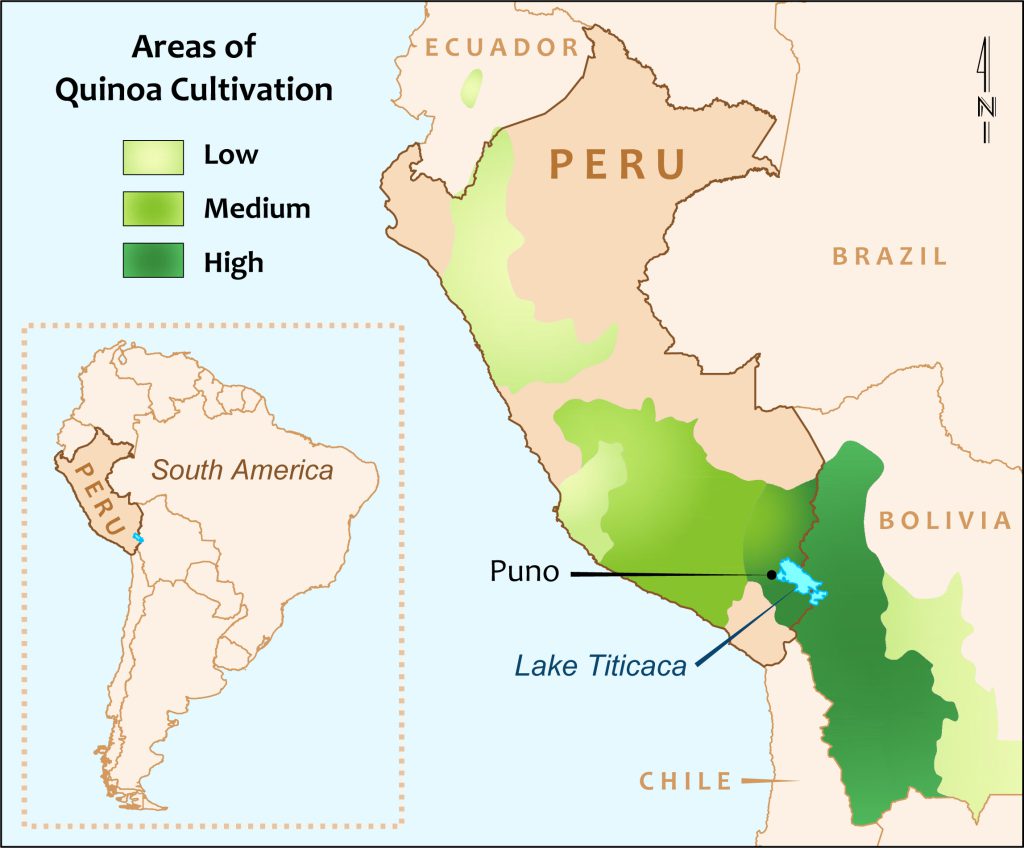Cooking Up an International Market for Quinoa
Cooking Up an International Market for Quinoa
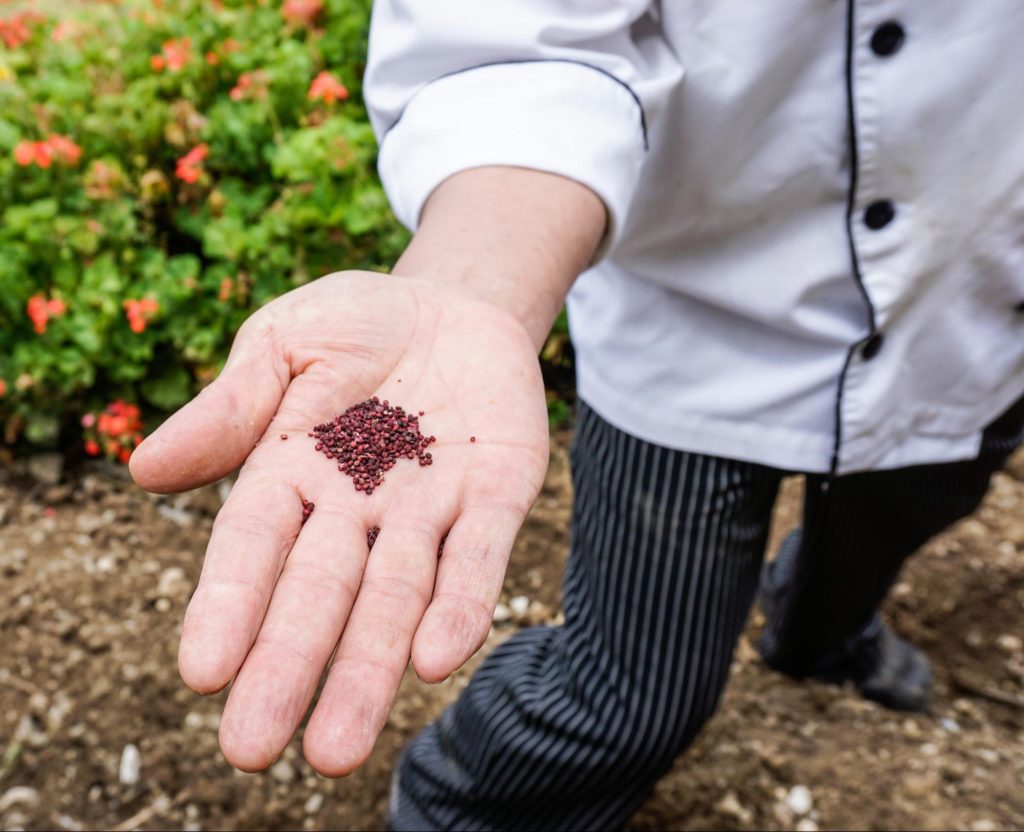
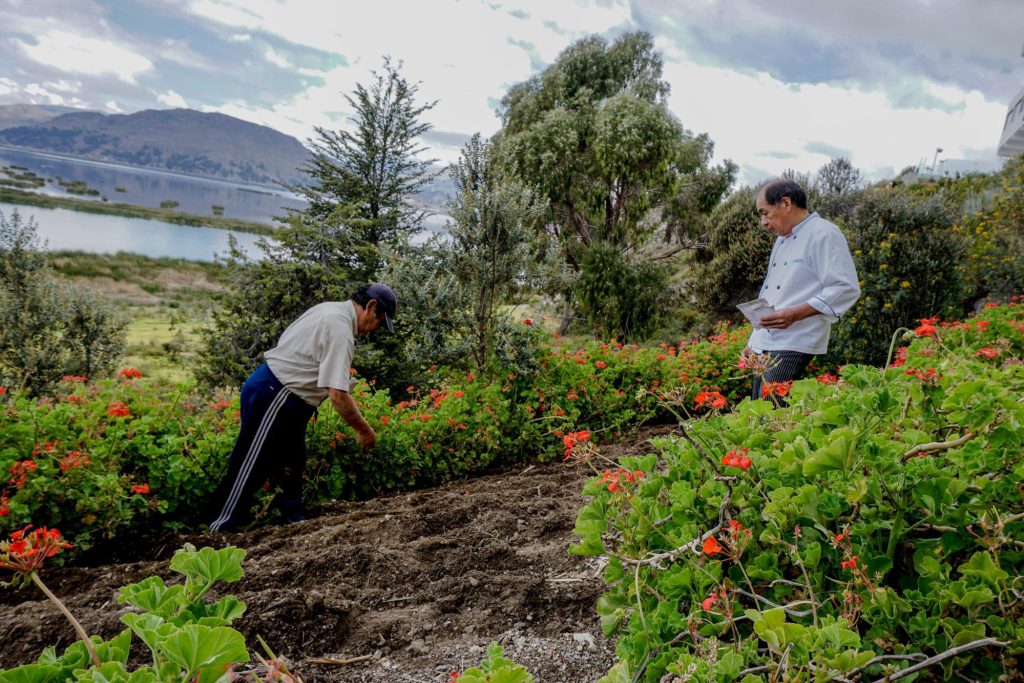
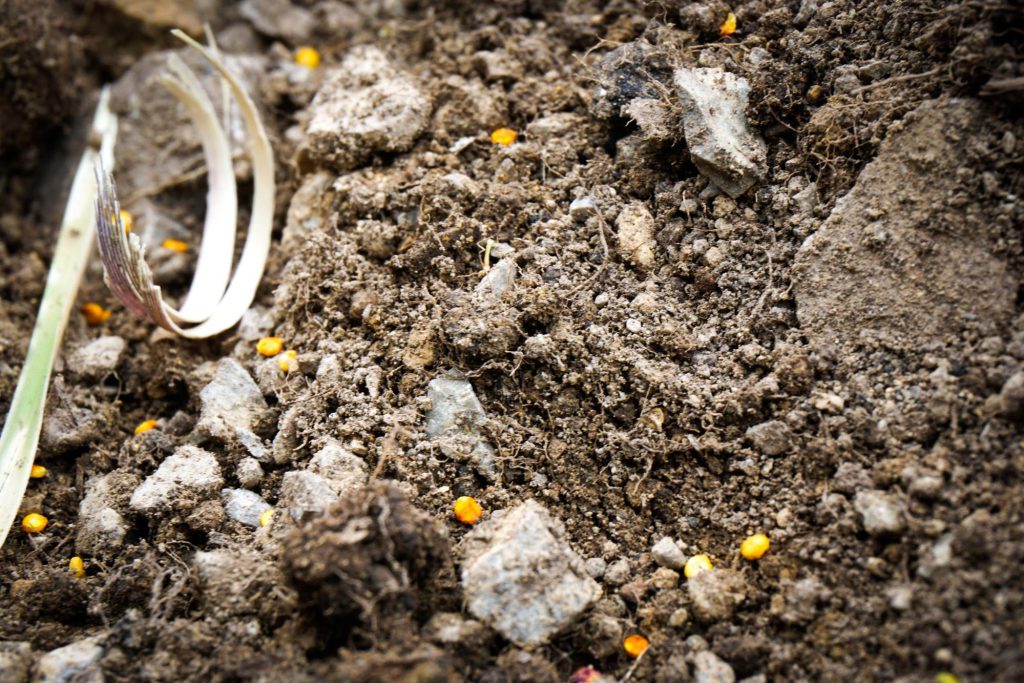
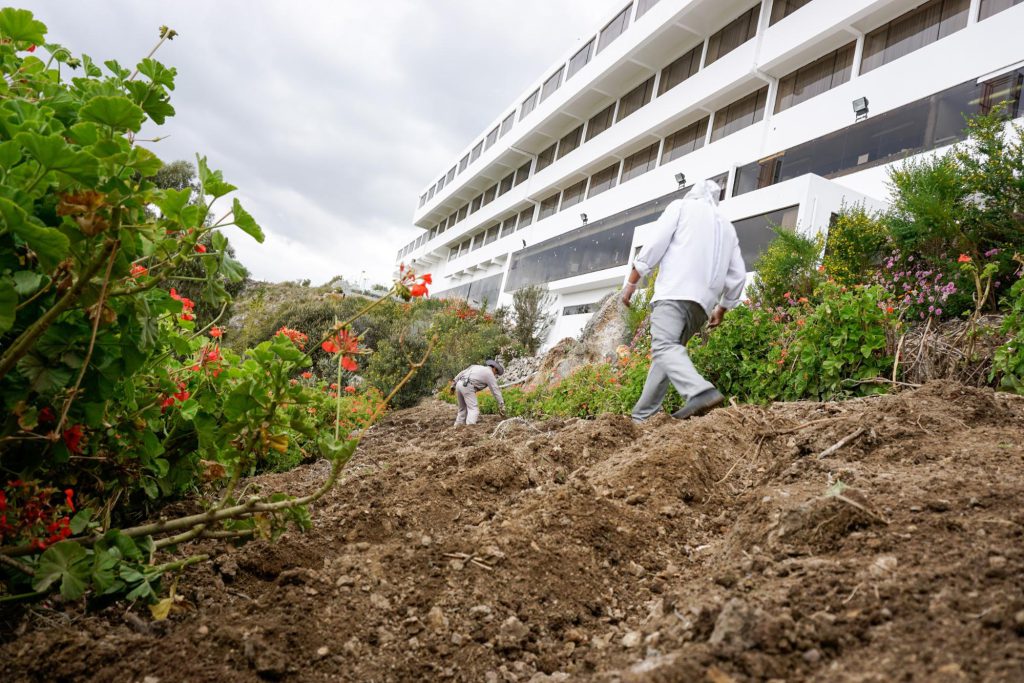
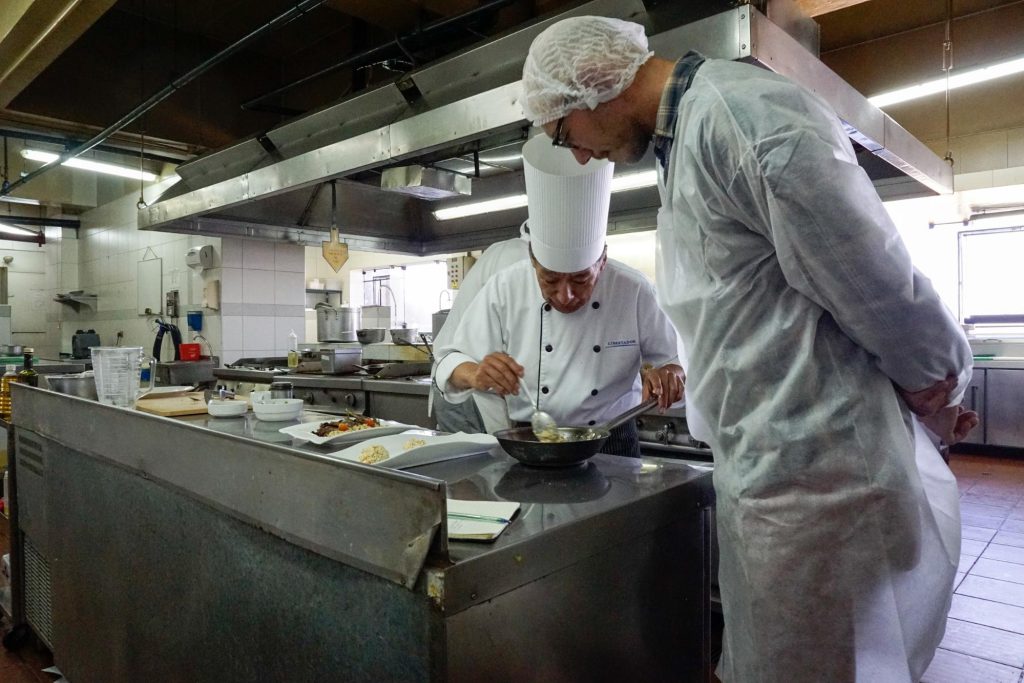
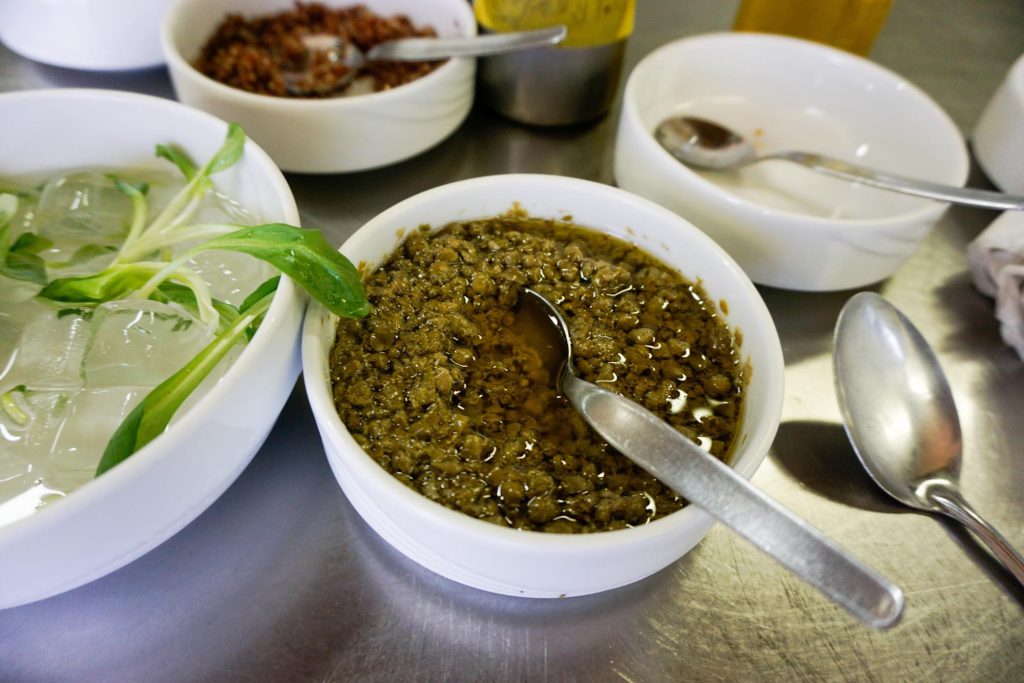
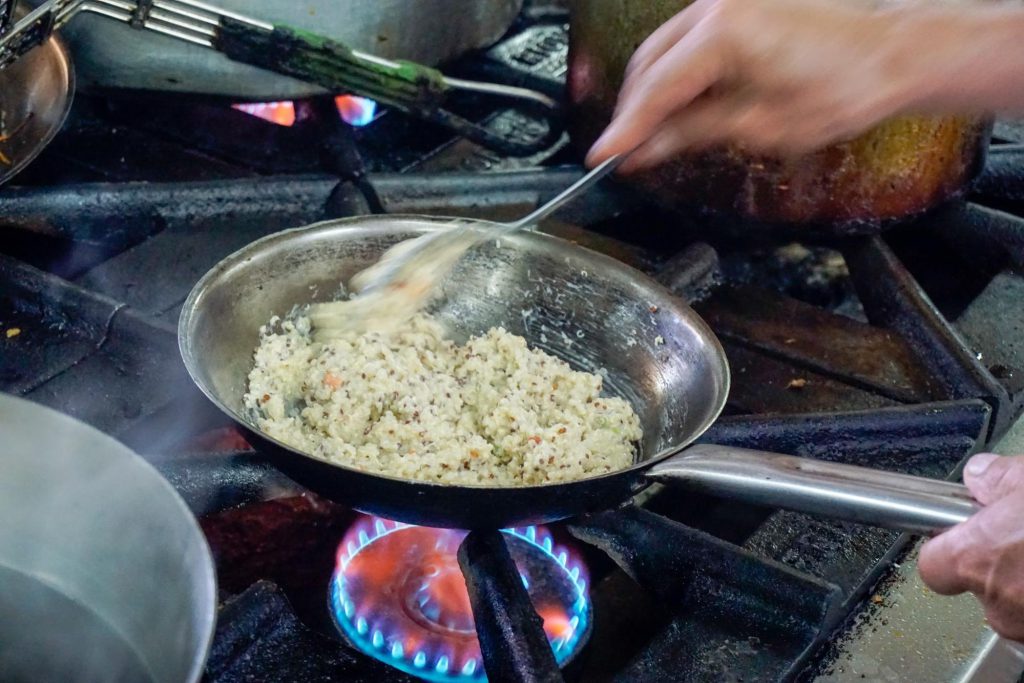
Chef Maguiña prepares p’esque, a local dish, with a twist. He infuses the red quinoa with grape juice extract to change the flavor and create a pop of color.
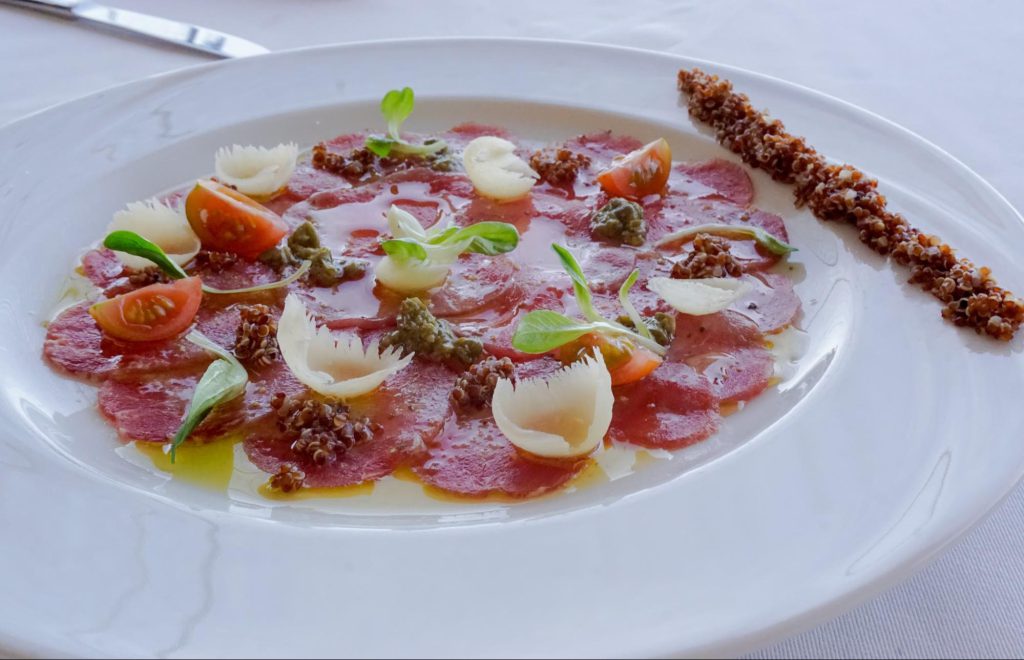

On a warm April morning, agronomist Alipio Canahua and Executive Chef José Maguiña prepare to plant quinoa in the gardens outside the Hotel Libertador in Puno, Peru, which sits on a picturesque island just off the coast of Lake Titicaca. The lush gardens are an experiment in sustainable horticulture—providing herbs, edible flowers, and now, rare varieties of quinoa to the hotel’s kitchen. The duo’s goal: to produce innovative fusion cuisine using endangered varieties of quinoa for international tourists. Their mission is to fight agrobiodiversity loss, one quinoa-inspired dish at a time.
Quinoa is a protein-packed food that looks like a grain but is actually a cousin of spinach. It was first domesticated in South America’s Lake Titicaca Basin probably more than 5,000 years ago and has been grown by peasant farmers ever since. After Spanish colonization, the edible seeds were denigrated by local elites as “peasant food.” This restricted the majority of quinoa consumption to the Indigenous communities that cultivated it, and the food became a marker of low social status. But quinoa is now in the midst of a surge in popularity globally, thanks in part to its excellent nutritional value. In 2013, the United Nations Food and Agriculture Organization celebrated the International Year of Quinoa, throwing a spotlight on the neglected and underutilized crop. Peruvian exports have skyrocketed from just US$380 in 2003 to over US$143 million in 2016, according to the Peruvian Ministry of Agriculture and Irrigation.
Rising demand has brought more opportunities for farmers in Peru and Bolivia—but it has a downside too. In search of higher profits, the industry funnels demand toward the one or two varieties that have the highest yields, need the shortest growth periods, and are the easiest to process. Over 3,000 known varieties of quinoa exist, but farmers typically grow the white, sweet quinoas that are more cost-efficient. As a consequence, less commercially viable varieties like the blood-red cuchi wila are now hard to find on Andean farms, and the biodiversity of quinoa suffers. This story has played out with many other crops over time: Today, for example, there is only one major commercial variety of banana—the Cavendish—although more than a thousand varieties have existed throughout the banana’s history.
Canahua, along with his plant scientist colleagues and international experts, fear this trend will continue to threaten quinoa. For the high-altitude, climate change vulnerable farms where highland quinoa grows, a less diverse range of crops can spell certain doom for farmers, leaving them susceptible to catastrophic failure.
But if the market encourages standardization, which leads to a loss of biodiversity, can it also provide a solution? That idea is counterintuitive, but Canahua’s experience tells him it could be possible.
When we met Canahua in Puno in November 2015 each of us was in the midst of independent ethnographic fieldwork on different aspects of quinoa culture. Adam Gamwell was working with agronomists and nongovernmental organizations on agrobiodiversity conservation, while Corinna Howland was studying commercialization with a village-based quinoa cooperative. Canahua invited us to conduct some research on the project he had started with Maguiña, and we jumped at the opportunity to add gastronomy to our fieldwork menu.
Canahua grew up in a small village two hours’ drive south of Puno city, where his parents were quinoa farmers. Since the 1970s, he has made a name for himself by advocating for, and participating in, internationally backed development programs that support traditional Andean agriculture and community-led biodiversity maintenance. One of these was USAID’s Poverty Reduction and Alleviation project (1998–2008), which was designed to eradicate extreme poverty by providing small-scale farmers with market access for their products.
As part of that project, Canahua was asked to set up a small exposition for visiting businesspeople from the U.S.-based Quinoa Corporation in the early 2000s. With only 24 hours to prepare, he decided to host a dinner instead, showcasing different varieties of quinoa. He phoned his friend, Chef José Maguiña, for help. The pair decided to feature pasankalla rojo and chulpi—two varieties that Canahua was hoping to revive after documenting their decline in the Puno region.
The chulpi provided the base for a shrimp soup, and the pasankalla acted as a kind of garnish alongside vegetables and fruit. Canahua was convinced that the translucent white chulpi, with its milky-sweet flavor, would have the bigger impact on the visitors. But to his surprise, they were enamored with the pasankalla for its red color and nuttiness.
Following the dinner, the businesspeople wanted to buy a 26-ton container (equivalent to 23,600 kilograms) of pasankalla that very evening. Canahua was floored. He only had 15 kilograms of it: “Well, 14 following the dinner,” he says with a smile.
Canahua worked with local farmers over the next few years to increase the supply to meet the new demand, and they suddenly had a partnership with the then-largest importer of quinoa worldwide. Watching two humble dishes produce global demand for red quinoa cemented Canahua’s faith that a single dish, meeting the right palates, can turn the quinoa market on its head.
Canahua and Maguiña decided to see if they could replicate their first success by appealing to tourist taste buds at the hotel. In April 2016, the duo organized a winter planting of seven varieties, six of which Canahua and other agricultural experts consider to be under threat: sajama, k’coito, choclito, pasankalla rojo, huariponcho, and cuchi wila. (The seventh, salcedo INIA, is commercially grown.) They also now source others, such as chulpi, from local farmers.
By creating dishes featuring these varieties, the pair aims to cultivate a taste for a broader spectrum of quinoa in the global market. Ideally, they hope tourists will spread their cause for them, generating a demand for heritage varieties of quinoa in their home countries. In turn, Canahua and Maguiña hope this will trigger demand at a local market level, providing farmers with fair compensation for conserving threatened crops. The duo jokes that they are promoting local agriculture through “la conquista del estómago de la turista”—the conquest of the tourist’s stomach.
Maguiña is particularly keen to use local and traditional products—around 80 percent of the ingredients they use in the kitchen come from local markets or directly from farmers in the region. His use of “traditional” foods in high-end cuisine performs a double function: It lets local elites see countryside staples in a new light, and it gives tourists an opportunity to try exotic ingredients and flavors.
“Every plate has a protagonist,” Maguiña says. He puts quinoa in the spotlight through a playful approach to traditional cooking that takes advantage of the different varieties’ tastes and textures. Choclito, for example, has sweet, large seeds that can be easily whisked to produce a sticky rice-like texture, while chulpi’s milky quality makes it an excellent base for flans, soups, and ice creams.
Maguiña describes his cuisine as “highland fusion.” Sometimes this means using Andean ingredients for the raw components of the dish, and fusing them with European aesthetics and techniques that transform these ingredients into something almost unrecognizable in the local food culture. His alpaca carpaccio dish, for example, borrows the Italian cold cut technique of pounding sliced meat until it is paper-thin and serving it raw, rather than using the Andean technique of salting and drying meat called ch’arki (where we get the English word jerky). Other times, this means preserving traditional uses of different varieties of quinoa—but with a cosmopolitan twist. His version of p’esque, for example, which typically consists of white chulpi quinoa, local cow’s milk, and cheese, is a distant, fancier cousin of the local staple. Red pasankalla quinoa infused with grape-juice extract adds visual interest and sweetness to the dish, which is strange to local tongues. Ultimately, the dishes must cater to international tastes, as Maguiña is banking on tourists’ palates as a way to create demand for agrobiodiversity.
Maguiña and Canahua’s project involves some paradoxical tactics: They are using the market to solve the problem of market standardization and are trying to aid local agriculture by favoring cosmopolitan over local food traditions. But they hope that their bold attempts at gastronomy will play, in Canahua’s words, “a very important role in the dynamic conservation of quinoa’s agrobiodiversity.”
The team’s quinoa-centric menu has been served at the Hotel Libertador since the beginning of this year, and a cookbook will go on sale in 2018. It’s too early to say whether their project will have a real impact on quinoa supply chains. But they hope that someday soon the difference between choclito and chulpi quinoa will be as obvious to foodies as the distinction between jasmine and basmati rice.





























